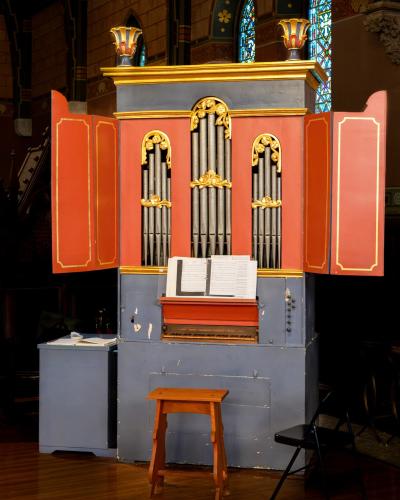Overview
A well-kept secret of Sage Chapel, concealed behind two wings that open to reveal a façade of delicate pipes, the Cornell Italian organ is an original 18th-century instrument built by little-known builder Augustinus Vicedomini in 1746. Built in the vicinity of Naples, Italy, the organ still bears Vicedomini’s signature, discreetly hidden inside the wooden case of the organ. It was purchased by Cornell in 2000 from the collection of musicologist, conductor, and keyboard player Alan Curtis. Restoration work had been carried out by the Italian firm of Formentelli prior to the instrument coming to the US, and further restoration was done at Cornell in two phases, by Greg Harrold (Los Angeles) and by Munetaka Yokota (GOArt).
The instrument has a very lively character, and with its meantone temperament, and highly vocal quality, it is a fine vehicle for keyboard music from the 16th to 18th centuries. Regularly heard in concert playing music not only from Italy, but also other early manualiter traditions across Europe, the organ has a single manual with short octave, and gives students a unique opportunity to experience this earlier part of the keyboard’s history on campus. Its small, five-part ripieno chorus is typical of the standardized plan practiced by Italian builders from the late-16th century onwards, found too in the instruments of Vicedomini’s famous Venetian contemporary, Pietro Nacchini. Complementing this chorus are the beautiful voce umana, whose undulating tuning mimics the human voice, and a delicate 4’ flute. Ever a favorite with audiences, the Ussignoli is a bird stop whose warbling effect is created by a tiny set of pipes sitting in water, which blow bubbles when air is allowed to them.
Specification
Manual (C-c3; short octave)
1. Principale
2. Ottava
3. Quindecima
4. Decimanona
5. Vigesimaseconda
6. Voce Umana (from c2)
7. Flauto in Ottava
Ussignoli
Tiratutti
Bellows operated either manually or by electric motor
Pitch: A=427
Temperament: Quarter comma meantone

